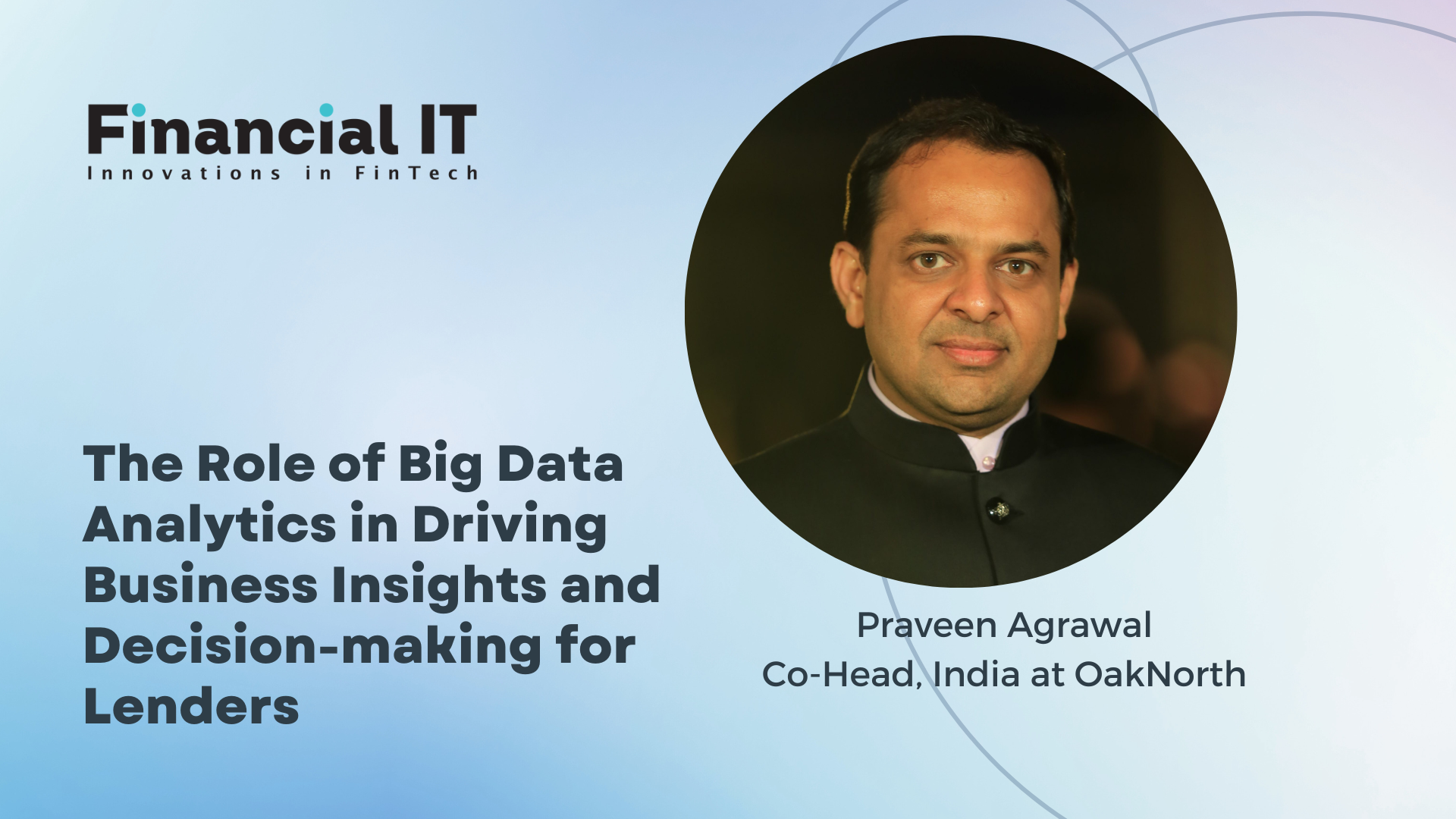The Role of Big Data Analytics in Driving Business Insights and Decision-making for Lenders

- Praveen Agrawal, Co-Head, India at OakNorth
- 25.07.2023 10:15 am #data #lending
In today's rapidly evolving digital landscape, lenders are under significant pressure to swiftly make well-informed decisions while effectively mitigating risks. The traditional lending approach, which relies on credit scores and income levels to evaluate creditworthiness, often falls short in meeting the requirements of the current dynamic business environment. Big data has transformed the lending landscape by providing banks with access to an extensive volume of structured and unstructured data that can be used to drive better decision-making, enhance risk management, and improve overall efficiency.
Traditionally, lenders relied heavily on financial statements, credit scores, and historical data to evaluate the creditworthiness of businesses. While these factors remain important, the utilization of big data analytics elevates the credit evaluation process by encompassing a wider array of data points. One of the key benefits of big data in lending is the ability to gather real-time and non-traditional data sources such as social media activity, transactional data from point-of-sale systems, customer sentiment analysis, and industry-specific data to gain insights into a business's reputation, market trends, and overall performance. Lenders can also expand the reach of their services and incorporate more businesses into the official credit system by harnessing alternative data sources and data analytics.
Furthermore, lenders can leverage big data analytics to segment their customer base according to diverse attributes, including demographics, spending patterns, and risk profiles. This segmentation allows lenders to customize their marketing strategies and product offerings to specific customer segments, resulting in more targeted and effective campaigns. Moreover, big data analytics helps lenders optimize their loan pricing, repayment options and terms based on various factors such as market conditions, cash flow dynamics, borrower risk profiles, and internal performance data. This personalized approach enhances customer satisfaction as well as strengthens lenders' relationships with their clients, fostering long-term partnerships.
Big data analytics also enables banks to identify patterns, anomalies, and abnormal behaviour that could potentially indicate fraudulent activities. The technology can also aid in real-time monitoring of loan portfolio performance, enabling lenders to identify early warning signs and promptly take proactive measures to address potential issues. This proactive approach allows lenders to take necessary actions, such as restructuring loans or implementing risk mitigation strategies, strengthening credit policies in susceptible segments, and diversifying risk exposure. Big data analytics also provides lenders with real-time insights into market trends, enabling them to swiftly adapt their lending strategies and capitalize on emerging opportunities.
OakNorth Bank in the UK utilizes data analysis methods to develop its own unique models that provide a granular level view of each of its borrowers. By integrating borrower-provided data with our extensive collection of external data, we enhance the depth of point-in-time analysis and monitoring capabilities. This approach has been one of the main factors that has enabled OakNorth Bank to achieve results that rank it among the top 1% of commercial banks globally in terms of RORE, efficiency and Net Promoter Score.
Looking forward, as lending involves credit risk, operational risk, and market risk, embracing data analytics can create more efficiencies and help lenders monitor and manage these risks more effectively. Adopting a strategy based on data-driven decision-making will also give lenders a more comprehensive picture of an individual borrower’s credit situation, enabling them to lend quickly and wisely to more businesses and driving better outcomes for them.



















